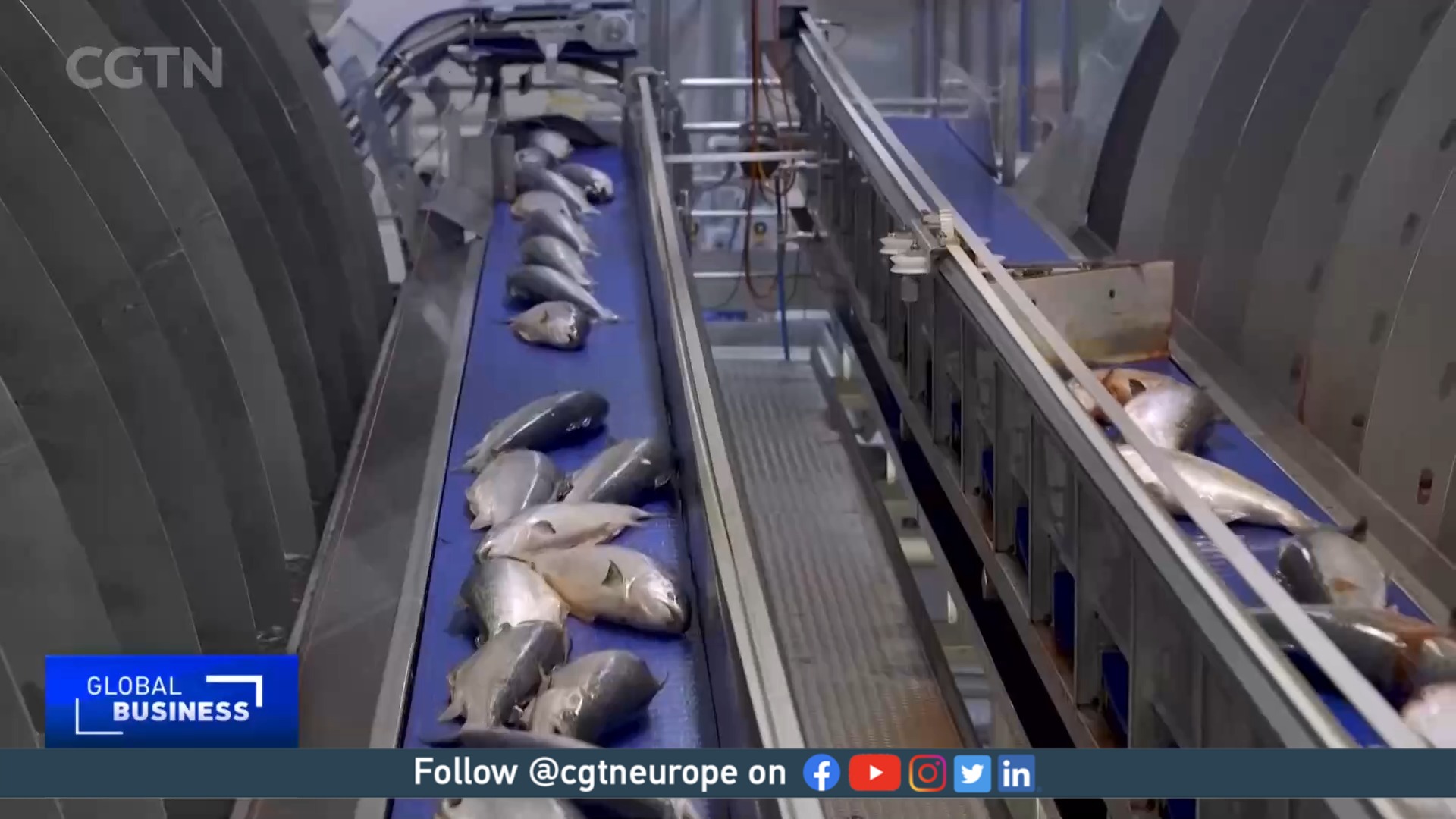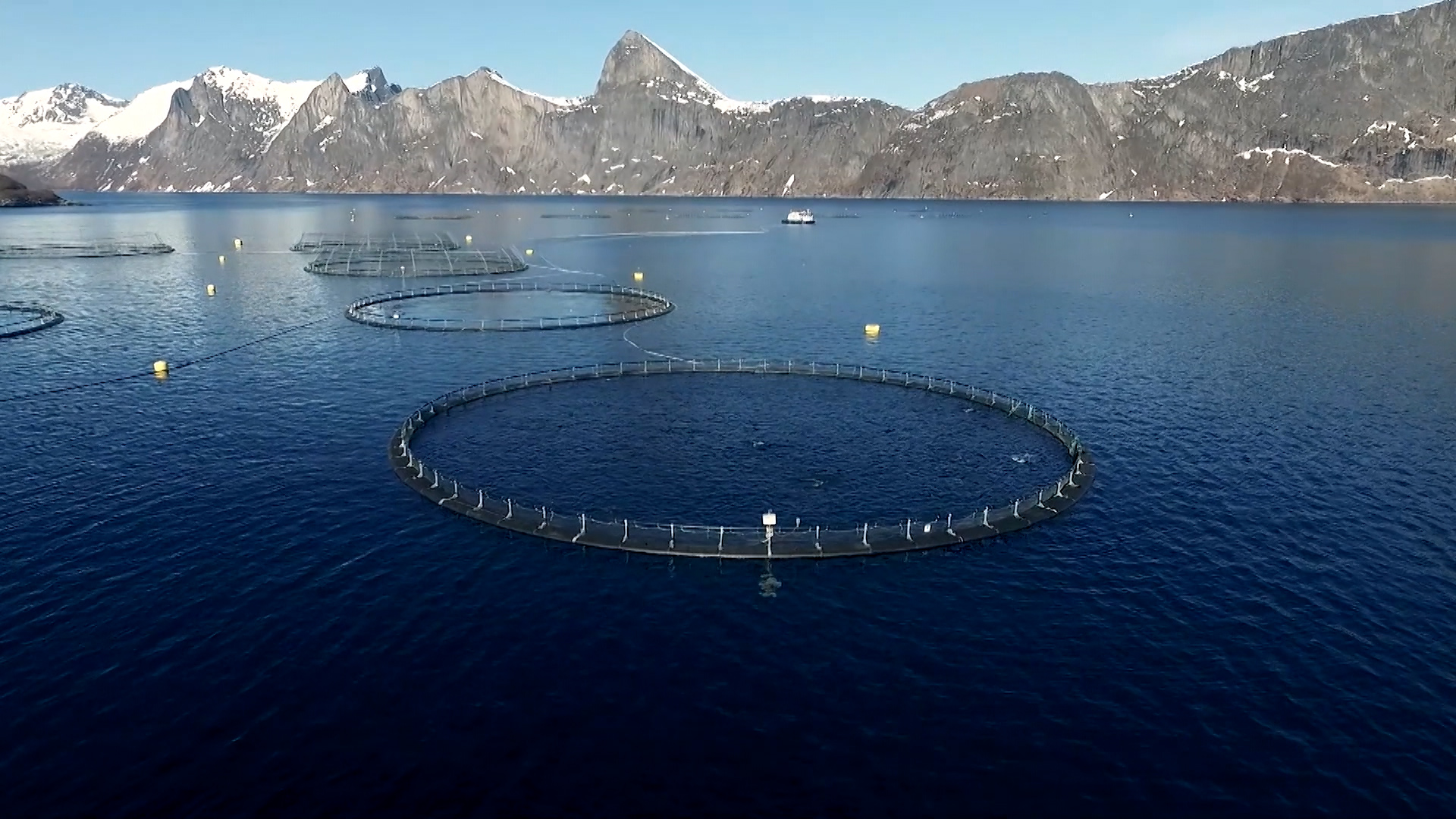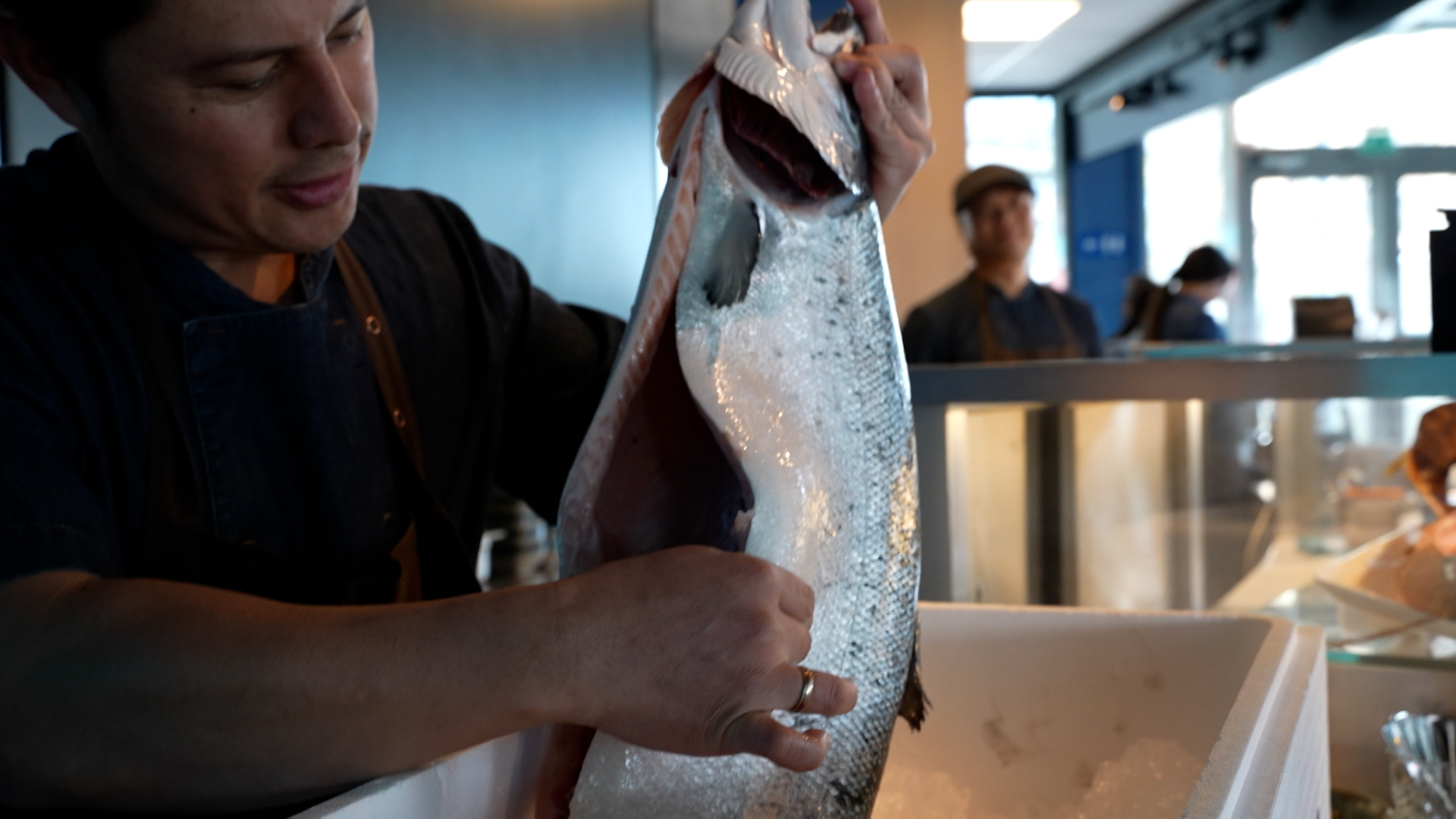03:00

Norway's salmon exports to China are set to leap due to a growth in demand from the country's growing middle class.
"China is one of the most exciting growth markets for Norwegian seafood and it has such a huge potential," the Norwegian Seafood Council's Camilla Beck tells CGTN.
But it's prompted a debate over how the industry can more efficiently manage its fish stocks – and prevent disease and infestations.
READ MORE
Norway's Black metal': From church-burning to cultural icon
Norway, Germany sign renewable energy agreement
Does music make pigs perky?
The value of Norwegian seafood exports to China hit a record high in the first quarter of the year. Over 40,000 tons of salmon, cod and other seafood were shipped in April – an increase of 18 percent year-on-year – making Beijing the third largest market for Norway's fish.
This comes as demand for such products has seen a bounce back in line with China's reopening after the pandemic.

Norway's fish farms are mostly located on the country's Western border. /Norwegian Seafood Council
Norway's fish farms are mostly located on the country's Western border. /Norwegian Seafood Council
For Norwegians, fishing is more than just an income – it is part of their identity.
"The salmon gives us the possibility of having work and industry along the long long coastline,' says Camilla Bredesen, the manager of Oslo's salmon visitor center, where tourists can learn about – and taste – Norway's most exported fish.
"There are people living on a lot of islands in the very deep fjords and this is the key industry."

At Oslo's 'The Salmon' vistor center, Camilla Bredesen shows tourists the country's important salmon industry. /Gasser/CGTN
At Oslo's 'The Salmon' vistor center, Camilla Bredesen shows tourists the country's important salmon industry. /Gasser/CGTN
The council says Norway's fish stocks have remained broadly stable in recent years. But it needs to find better ways of eradicating a problem that specifically affects salmon – salmon lice – before the industry can expand further.
Currently, salmon lice are removed mechanically – but a significant number of the fish die during that process.
"Handling will destroy the mucus of the fish, it will destroy some of the skin and you get sores and wounds on the fish," Edgar Brun from Norway's Veterinary Institute tells CGTN. "We need to find a way how to separate the fish from the open seawater in order to control the salmon lice situation."

Salmon can be prepared in many ways, from Sashimi to traditional smoked salmon. /Gasser/CGTN
Salmon can be prepared in many ways, from Sashimi to traditional smoked salmon. /Gasser/CGTN
Despite these ongoing issues, the Norwegian Food Safety Authority says there is no health risk for people eating the salmon.
For now, carp remains the most popular fish in China. But due to a growth in the country's middle class, the more expensive salmon is gaining popularity – and that's set to create more demand, a demand that Norway's fishing industry will hope to satisfy.
Subscribe to Storyboard: A weekly newsletter bringing you the best of CGTN every Friday